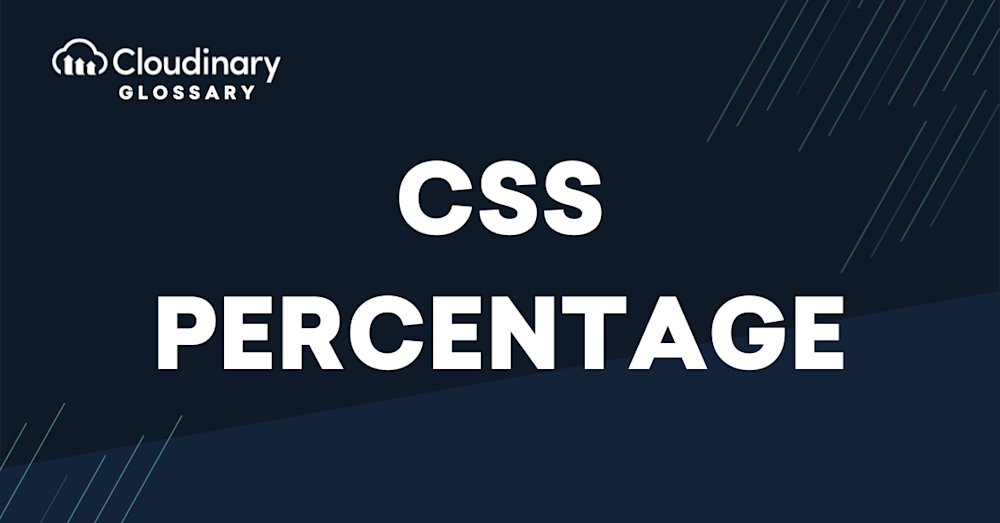What Are CSS Percentages?
CSS Percentage is a fundamental aspect of Cascading Style Sheets (CSS), which defines values as a percentage of parent elements. It allows developers to allocate a specific percentage value to different CSS properties such as font size, width, height, margin, and padding. Using percentage values provides a flexible and dynamic approach to web design, making it easier to create responsive layouts that adapt to a wide range of screen sizes and resolutions.
As a developer, it’s important to note that this makes elements on a webpage more responsive. Using percentages allows for a more fluid layout that adapts to different screen sizes and resolutions. For example, setting the width of an element to 50% instructs the browser to calculate half of the parent element’s width automatically, regardless of the device or screen size. This ability to dynamically adapt to varying environments can significantly improve user experience, especially in today’s multi-device world, where websites are viewed on various screen sizes, from small mobile devices to large desktop monitors.
Common Use Cases for CSS Percentages
CSS Percentages can be implemented in several aspects of web design that aim for a responsive and flexible layout. We’ve got a few examples where CSS Percentages shine:
- Flexible layout dimensions. You can use percentages to specify the widths and heights of an element relative to its parental container, providing a scalable interface that adapts automatically to varying screen sizes.
- Responsive image sizing. By using percentages for image dimensions, you can ensure the images scale suitably with the layout and viewport size.
- Proportional padding and margins. Define margins and padding with percentages to maintain relative spacing between elements across different devices.
- Creating fluid grid layouts. Using CSS Grid or Flexbox systems, percentages can be used to define row and column sizes for a fluid and responsive layout.
- Viewport-relative positioning of elements. Percentages can prove unique for positioning the elements based on viewport dimensions, providing an adaptable UI experience.
When Should You Use CSS Percentages?
These are particularly handy when creating a responsive and adaptive design that caters to a wide range of screen sizes and devices. CSS Percentages are commonly used to establish fluid element sizes, positioning, margins, and paddings so that your design remains visually consistent and compelling regardless of the device type or window size.
CSS Percentages are especially useful in responsive web design, where a website’s layout and aesthetics must adapt smoothly to different viewport sizes, from mobile devices to large desktop monitors. CSS Grid and Flexbox layouts, commonly used to create versatile responsive designs, benefit significantly from percentages when defining column and row sizes or the proportional distribution of space.
When Shouldn’t You Use CSS Percentages?
Although CSS Percentages are valuable in a range of use cases, there are specific situations and aspects of web design where they may not be the best choice. Consider avoiding CSS Percentages in the following scenarios:
- Fixed-size elements. If you need a specific element to maintain an exact size regardless of its surroundings, using fixed units like pixels (px) will ensure that the dimensions remain constant.
- Font sizes. For improved accessibility and readability, it’s common to use relative units like ’em’ or ‘rem’ for font sizes, as they scale proportionally based on the user’s preferred settings or the parent element’s font size.
- Precise positioning. When working with specific design elements that require precise pixel-level alignment or positioning, it’s usually better to use absolute units like pixels (px) or points (pt), as percentages may result in unpredictable alignments.
- Nested percentage values. Be cautious when using percentages on elements with deep nested structures. Multiple percentage calculations on child elements can produce unintended results, as percentages will be applied relative to parent elements, which may have their own percentage values.
Closing Thoughts
By understanding when to appropriately use and when to avoid CSS Percentages, developers can build adaptable layouts that provide consistent and enjoyable user experiences across a wide spectrum of devices and screen sizes. CSS Percentages offer a powerful and versatile responsive and fluid web design method. Implementing CSS Percentages into your code transforms your static designs into flexible and appealing digital experiences to fit any viewport.
Having the right tools at your disposal is crucial for any web developer. That’s where Cloudinary comes in, providing cutting-edge image and video management solutions that can adapt and optimize your multimedia content for any device or screen resolution.
Sign up for free today and level up your web development journey with Cloudinary’s comprehensive suite of scalable and adaptive digital asset management solutions.
Additional Resources You May Find Useful:





